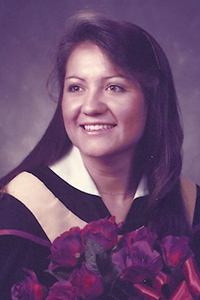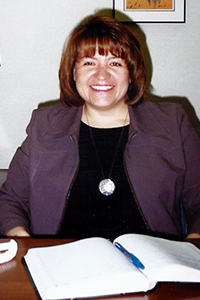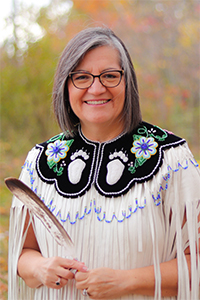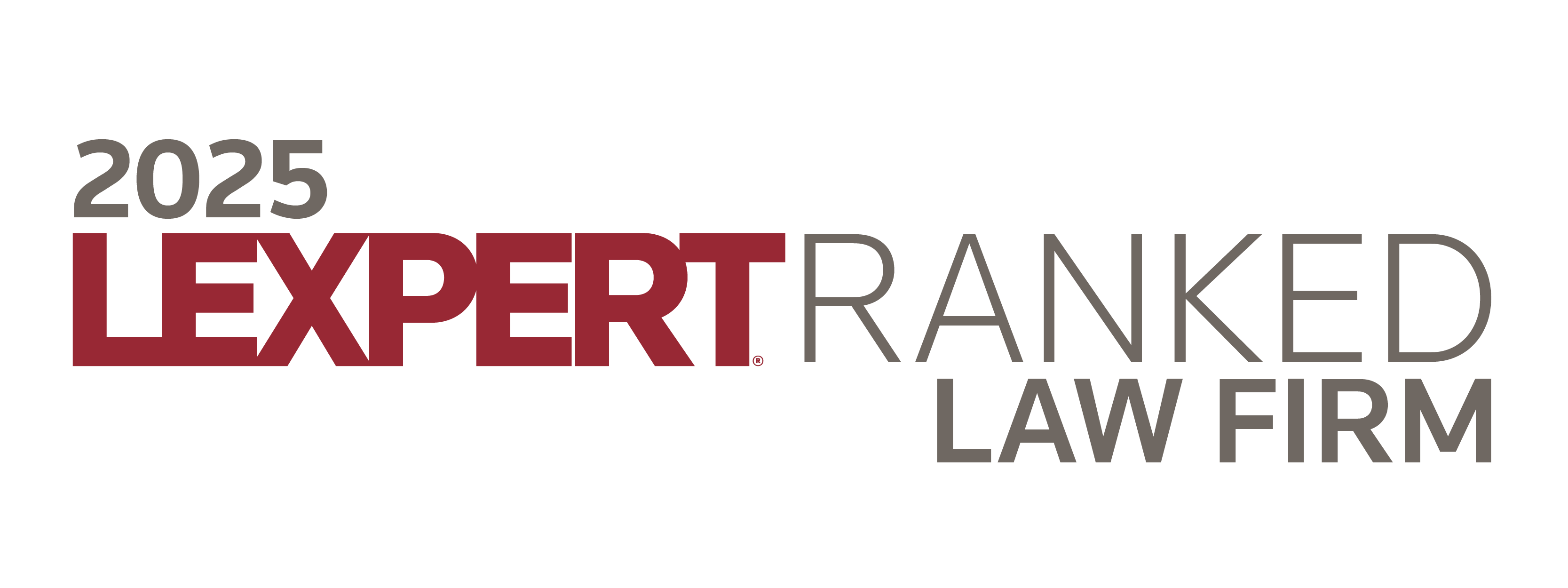Aird & Berlis Honours Kimberly Thomas With Formation of New Indigenous Law Student Scholarship
Aird & Berlis LLP has a long-standing history of offering guidance and engaging in business transactions in collaboration with Indigenous stakeholders, clients and legal counsel. For many years, the firm has worked in tandem with Kimberly Thomas in her role as Affiliated Independent Counsel and co-lead of the Indigenous Group.
Kimberly is a proud citizen of the Seneca Nation, Bear Clan, and an experienced corporate lawyer who provides incisive guidance and specialized legal expertise to Indigenous Nations and Indigenous-owned organizations. She previously articled and spent her early associate years at Aird & Berlis and went on to open her own practice dedicated to assisting Indigenous Nations with Nation-building through sustainable economic development.
“Kimberly’s legal knowledge and professional insight have been instrumental in serving the firm’s clients, and her personal journey as a lawyer and representative of the Indigenous community is inspiring,” said Steven Zakem, Managing Partner at Aird & Berlis. “Her dedication and experience in acting for Indigenous Nations has helped us to operate in a culturally responsive manner while offering the resources of a full-service firm.”
In recognition of Kimberly’s immense support to the firm, Aird & Berlis is delighted to announce a new law student scholarship to be offered through Indspire, a not-for-profit Indigenous organization. Indspire is the most recognized and reputable Canadian organization working with Indigenous students seeking financial support for various educational endeavours.
The Kimberly Thomas Indigenous Law Student Scholarship Provided by Aird & Berlis LLP will be granted to an Indigenous law student in the amount of $10,000 annually, for up to three years. The intention is to provide meaningful financial support for an Indigenous law student’s tuition and other incidental expenses, such as textbooks and administrative fees.
“The firm’s affiliation with Kimberly is a reflection of our mutual commitment to diversity and inclusion,” said Andrea Skinner, Partner and Chair of the firm’s Diversity & Inclusion Committee. “I am grateful for her efforts in this regard.”
Aird & Berlis offers related complimentary educational sessions for firm members and external networks by way of webinars, publications and sponsored third-party programs. In recent years, the firm has intensified its commitment to spotlight the achievements of Indigenous businesses and community members through dedicated diversity and inclusion initiatives. Significant programming has also been introduced to commemorate Canada’s National Day for Truth and Reconciliation.
We are grateful to Kimberly for sharing her story, by way of her “mini-memoir,” below.
Kimberly Thomas, In Her Own Words
I was fortunate to be raised at Six Nations of the Grand River Territory with the Longhouse teachings – part of our Haudenosaunee spiritual beliefs and ceremonies, and the Great Law of Peace – the oral constitution of the Haudneosaunee Confederacy, which have existed since time immemorial. I was privileged to spend my early childhood and youth with my maternal grandparents, many elders and Knowledge Keepers who instilled a strong sense of pride in my identity as a Seneca Nation woman, from the Bear Clan. Traditionally, we are a matriarchal society, which means we obtain our Nation and Clan from our mothers.

My maternal great-grandmother attended the Carlisle Indian Industrial School in Pennsylvania, which was the flagship Indian boarding school in the United States from 1879 to 1918. As in Canada, “industrial schools” or “boarding schools” in the United States had the same policy of assimilation and genocide for Indigenous children. As such, I am incredibly proud of my maternal great-grandmother’s resolve to maintain her Seneca language and Longhouse teachings so that she could pass this on to her children and grandchildren. Unfortunately, after my mother’s generation, Seneca was no longer our family’s first language, due to intergenerational trauma and my parents, siblings and I being survivors of Indian Day School at Six Nations of the Grand River.
I attended Indian Day School from kindergarten to Grade 8. Beginning with my great-grandmother’s attendance at Carlisle through to our attendance at Indian Day School, generations of my family have experienced intergenerational trauma, which we are still healing from today. In my view, what has made us most resilient is that we were able to hold on to our traditional beliefs and ceremonies, and have remained committed to language preservation, despite the attempted assimilation and genocide of all Indigenous families by the Canadian and American governments.
My Career Journey Towards Law
I began my career as a social worker, obtaining my Bachelor of Social Work at King’s School of Social Work, Western University in 1988 and my Master of Social Work at the University of Toronto in 1989. While in my undergraduate program, I had an interest in pursuing law school, but I did not have the confidence to pursue it at that time. Interestingly, my maternal grandmother also had a desire to become a lawyer when her homestead and those of many other Seneca families were burned and flooded by the United States Army Corps of Engineers at the direction of the United States government to build the Kinzua Dam. Sadly, in her generation, this was not an option.
After four years of practice as a social worker, I understood more about colonization and the impact of intergenerational trauma on Indigenous Peoples. I was then inspired to effect change by seeking justice for Indigenous Peoples on a more macro level. By then, my confidence had increased and I began to consider applying to law school.

Around this time, one of my Indigenous classmates from Indian Day School, who was also from a traditional Longhouse family, told me she was accepted at law school. This gave me the final push to apply as well. I was grateful to be accepted at all the law schools I applied to, including my first choice, the University of British Columbia School of Law. At that time, UBC’s School of Law had the most courses available in Aboriginal Law. I also negotiated the opportunity to do an exchange semester at Arizona State University, where I was able to further study courses in Aboriginal Law based on American jurisprudence.
Upon graduation in 1996, I was fortunate to article and spend my early associate years at Aird & Berlis LLP. I received amazing training as a young lawyer. After a few years of practice, I chose to specialize in corporate/commercial law. I always had an entrepreneurial spirit, which fuelled my desire to establish my own law firm, Kimberly Thomas Professional Corporation after five years of practice on Bay Street.
As my practice flourished and my growing client base increasingly required a full-service firm, I reached out to Aird & Berlis. In 2017, I became affiliated independent counsel with Aird & Berlis. This has allowed me to offer my clients legal services in a culturally sensitive manner, while ensuring they have the expertise needed in various areas of the law.
Deep Family Ties
I grew up in the 1960s and 1970s at the height of the “Sixties Scoop,” an era where the Canadian government continued its policies of assimilation and genocide by apprehending thousands of Indigenous children from their families and placing them in foster care to be adopted by non-Indigenous families. As such, I consider myself extremely fortunate to be raised with my biological parents and a large extended family.

I am the third of six children. I had an older brother who passed tragically when we were children, which had a profound impact on my immediate and extended family. I have an older sister, two younger brothers and a younger sister.
I have been married for 18 years to a wonderful Mi’kmaq man from Eskasoni First Nation. We have a blended family of three daughters and one son. Our youngest son was born a micro preemie with significant special needs and unfortunately passed away unexpectedly at the age of 10.
During our son’s life, our family made many personal and professional sacrifices to ensure his needs were met. My husband became the primary caregiver and I significantly reduced my practice and professional commitments. Since our son’s death, my husband and I have remained deeply committed to helping children with special needs and their families, as we know firsthand the challenges and gifts involved in raising such special children.
Differing Legal Worldviews
There is an inherent conflict in Indigenous legal systems and Western legal systems, which my ancestors recognized at the time of the earliest Haudenosaunee Treaties. Haudenosaunee elders and Knowledge Keepers taught me from an early age about the Guswenta or, in English, the Two Row Wampum Belt (often referred to as the “Two Row” or “Two Row Wampum”) and its meaning. I was taught that the Two Row is a visual record of one of our earliest treaties between the Haudenosaunee and the Dutch. It is made of white wampum beads with two rows of purple wampum beads running parallel to each other. The Two Row was an agreement about how we were to treat each other and live together in peace and friendship. One row represents our non-Indigenous brothers in their boat, with their laws, sovereignty, values and way of life. The other row represents the Haudenosaunee with our laws, sovereignty, values and way of life. Neither party was to attempt to steer the other’s vessel.
I was often questioned why I would attend law school when I came from such a strong traditional family. Our elders cautioned that we were to be careful not to have “one foot in the boat and one in the canoe,” or we might fall in the water. My reason for attending law school was to learn about those laws, values and ways of life that were thrown into our canoe, so that I might help to remove them.

Indigenous Peoples have a fundamentally different worldview from Western society. As legal systems and remedies for justice are borne from a Nation’s worldview, there can be no other outcome but fundamentally different systems. Haudenosaunee people view the earth as our Mother and all living things are considered sacred. We view ourselves as stewards of the land, who can only ever hold land in trust for the coming generations. We can never truly “own” the land. The Western legal system is largely based on private property ownership and the rights to property, which is often valued above all else. This fundamental value difference creates inherent conflict.
It is so critical to try to understand the worldview of Indigenous Peoples when fulfilling the duty to consult. The legal threshold of the duty to consult does not necessarily align with the Indigenous perspective of the duty to consult. It is important to invest the time in getting to know the Indigenous community, especially the elders and Knowledge Keepers, in order to gain their trust. Without trust, it will be difficult to obtain the community’s truthful perspective regarding a proposed project.
Being a lawyer as well as a member of the Indigenous community has its challenges. The biggest challenge is the fundamental difference in my worldview with that of the Western legal system. It is also challenging as I now understand how the Western legal system has been used to colonize Indigenous Peoples. Canadian legislation was passed with the goal of assimilating Indigenous Peoples. Canadian policies were aimed at the genocide of Indigenous Peoples. In fact, from 1927 to 1950, it was illegal for a status Indian to retain legal counsel in Canada.
Moving Towards Inclusivity
Mentorship opportunities have been highly impactful to my legal career. I have an Indigenous mentor that hired me as a summer student after my second year of law school. He was a corporate/commercial lawyer. If I had not worked with him, I would never have seen how helping to build an economy for Indigenous communities could make a substantial difference.
As mentioned, my Indigenous classmate from Indian Day School was very influential in giving me the confidence to apply to law school. She remains a powerful role model to this day. I needed to have Indigenous role models and mentors that I could relate to so that I could see what was possible.
My non-Indigenous mentors have largely been from Aird & Berlis. As a young articling student and associate, I did not hesitate to reach out to very senior partners for advice and encouragement. I learned a great deal about how to manage a practice and how to problem solve. Most importantly, I learned to work as a team.

Earning visibility in the legal sector as a member of the Indigenous community has also been important on my journey. I have given a fair number of presentations over the years on various Aboriginal Law issues with continuous legal education providers. I have also written articles on Aboriginal legal issues. I regularly provide workshops on corporate governance, corporate structuring, taxation issues and human resource matters to my clients.
I have noticed that law firms have become much more inclusive than they were in the early years of my practice. As a young Indigenous lawyer in the late 1990s, I did not meet many other Indigenous or racialized lawyers working on Bay Street. I have also noticed that boutique Aboriginal Law firms have been recruiting and hiring more Indigenous lawyers, as they look to succession planning.
Law firms and non-Indigenous lawyers need to make a concerted effort to learn the full history of Canada, including the assimilation policies designed to colonize Indigenous Peoples, such as the residential schools and the Sixties Scoop. Awareness is a critical step to making systemic change. Most lawyers were not educated about the attempted genocide of Indigenous Peoples in Canada. With education comes understanding and compassion, both of which will help foster a more inclusive environment. Kindness, good manners and a sense of humour also go a long way!
New Indigenous Law Student Scholarship
The funds allocated in The Kimberly Thomas Indigenous Law Student Scholarship Provided by Aird & Berlis LLP show a real commitment by a Bay Street law firm to provide meaningful help to an Indigenous law student. In my view, all Indigenous Peoples in Canada have inevitably experienced some degree of intergenerational trauma. For an Indigenous student to be accepted into law school, that student has already had to overcome unbelievable odds. I would have been thrilled to receive a scholarship of this magnitude as a young law student. I recall working four summer jobs after first-year law school. I also worked part time throughout the year for the duration of law school. Financial assistance will go a long way to helping an Indigenous law student be successful. It sends the message, “We believe in you and are willing to invest in you.”
This type of allyship has been of immense benefit to my legal career. I had some amazing law school professors, both Indigenous and non-Indigenous, who were great mentors. The legal profession fosters mentorship, which I definitely took advantage of throughout my career. As mentioned, as an articling student and young lawyer, I sought out senior partners at Aird & Berlis for advice and encouragement. I maintained and nurtured these relationships while I started my own law firm, which has been critical to my success.
The current and next generations of Indigenous professionals have much to teach us. We can learn innovative approaches to truth and reconciliation. The younger generation has benefited from access to more technology. It has also had another generation to heal from intergenerational trauma. I was taught that it takes seven generations to heal from trauma. It is my hope that the incoming generation of Indigenous professionals are less impacted than my generation. We should be reminded that each generation moves the needle a bit further towards truth and reconciliation. My generation had to continue to forge new paths. I was one of a few Indigenous lawyers to article and practise at a Bay Street firm.
There are now several Indigenous lawyers, both associates and partners, practising at large firms across the country. As Indigenous communities build capacity and have greater access to capital and resources, they need to access full-service firms to meet their growing needs. Indigenous lawyers can offer cultural sensitivity to their practice, which is a value-add to a full-service firm.
I was taught that “knowledge is power.” Many Canadians had no idea about the legacy of residential schools. The discovery of the 215 graves at the Kamloops Indian Residential School set off a chain reaction where many Canadians want to know the truth about Canada’s entire history. With truth, reconciliation is possible. In my view, the recently enacted National Day for Truth and Reconciliation opened an era for the possibility of real change. It has always been my dream that eventually Canada will also honour the Two Row Wampum, as the Haudenosaunee have done. It was, after all, meant to last forever or, as Haudenosaunee oral tradition states, “As long as the sun shines, the water flows and the grass grows.”

